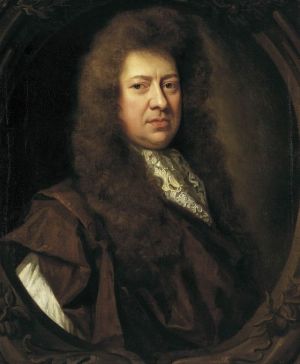The Clapham Society Local History Series — 21
Pepys moved to Clapham to take in the serene air
by Timothy Walker
This article first appeared in the South London Press on 7 April 2017

Samuel Pepys’ connection with Clapham is well known and he visited it over a period of forty years. Naval connections brought him there, since his client, Dennis Gauden, the Surveyor General of Victualling to the Navy, had a house there from 1649. Gauden makes frequent appearances in Pepys’ diaries and gave him regular gifts, although Pepys claimed that he never accepted any gift before a contract had been signed. Pepys visited Gauden’s house, Clapham Place, in July 1663, commenting,
I resolved to go to Clapham, to Mr. Gauden’s, who had sent his coach to their place for me … When I came to Mr. Gauden’s one first thing was to show me his house, which is almost built, wherein he and his family live. I find it very regular and finely contrived, and the gardens and offices about it as convenient and as full of good variety as ever I saw in my life. It is true he hath been censured for laying out so much money; but he tells me that he built it for his brother … Besides, with the good husbandry in making his bricks and other things I do not think it costs him so much money as people think and discourse.
Pepys continued as a regular visitor, including at the height of the Plague in July 1665 but Gauden finally met disaster in 1677, being arrested for debt, and there was nothing Pepys could do to avoid his bankruptcy. William Hewer, Pepys’ former clerk but then a merchant and family friend, then bought Gauden’s house and moved in himself on Gauden’s death in 1688. Hewer promptly improved it, disposed of the farms used by Gauden to supply his victualling contracts, and retained only gardens and pleasure grounds. Pepys continued to visit Hewer’s mother who lived there.

Pepys and Hewer both fell out of favour after the Glorious Revolution and, with increasing ill health, Pepys retreated to Hewer’s house for several weeks in the summer of 1697, a much longer period in 1700, and then permanently in the summer of 1701, with all his books moved there the next year. While Pepys was very much an urban animal, Clapham had good air, and its height above sea level of one hundred feet, coupled with its distance from the City, provided considerable improvement for those used to the stench and noise of London. John Evelyn commented: ‘I do most heartily congratulate the improvement of your health, since your change of air,’ and later ‘while I mourn your absence here, you are at Clapham, enjoying better health, a purer air, nobler retreats.’ Pepys himself, having remarked on the improvement in his health, ‘perfected by the air of this place’, went on to write: ‘if I must be left to philosophise by myself, nobody, I fancy, will blame me for choosing to do it in a serene air, without noise, rather than where there is nothing of the first, and nothing else but the last.’
Hewer had made the house much more pleasant to live in, decorating it with fashionable ornaments and furniture, and improved the gardens. Evelyn wrote: ‘I went to visit Mr Pepys at Clapham where he has a very noble and wonderful well furnish’d house, especially with Indian and Chinese curiosities. The offices and gardens well accommodated for pleasure and retirement.’ The fact that Evelyn himself had planned the improvements probably accounts for Evelyn’s reference in a letter to Pepys to ‘your Paradisian Clapham’. William Nicolson, about to be consecrated as Bishop of Carlisle, visited Pepys in 1702, and described the library,
Models of the Royal Sovereign and other Men of War, made by the most famous Master-Builders; very curious and exact, in glass Cases. Mr Pepys’s Library in 9 cases, finely gilded and sash-glass’d; so deep as to carry two Rows … of Books on each footing. A pair of Globes hung up, by pullies. The Books so well ordered that his Footman (after looking the Catalogue) could lay his finger on any of them blindfold. Miscellanies of paintings, cuts, pamphlets, etc in large and lesser Volumes.
Pepys played a full part in the community until his death in 1703 and left a legacy of £5 to the poor of Clapham and a series of mourning rings to Clapham residents. He left his estate to John Jackson, the son of his sister Paulina. Hewer lived on in the house until his death in 1715 when Jackson took the opportunity to build a modern house in the grounds, The Cedars, a three-storied red-brick structure with a platform on the roof, giving extensive views of the City and river and southwards towards the Surrey hills. Clapham Place remained empty when Jackson died in 1722, and was finally knocked down in 1762.
You can read more about Clapham in the seventeenth century in The First Clapham Saints by Timothy Walker or at www.claphamhistorian.com.